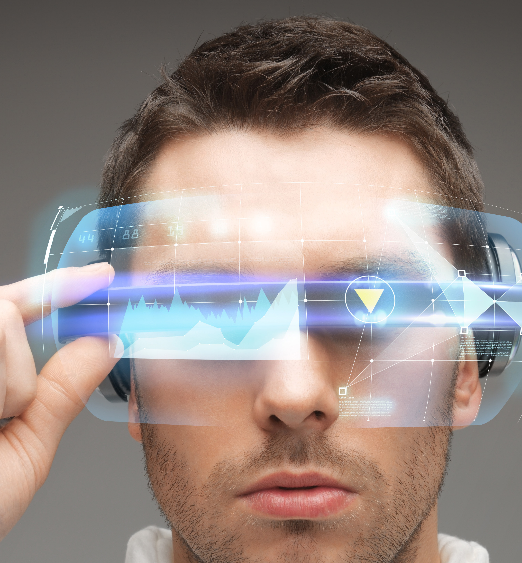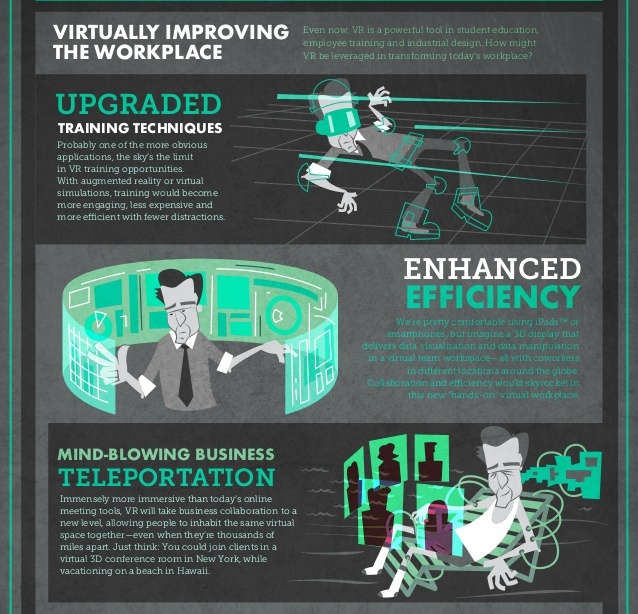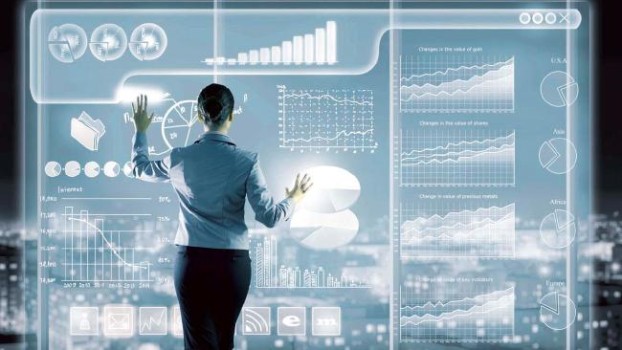Virtual reality is set to transform future workplaces by becoming the preferred method of communication, training, socialization and collaboration due to its ability to deliver immersive experiences in these areas, London Business School professor Lynda Gratton said in a report released last month.
Virtual reality enables “many-to-many communications,” in a more interactive and immersive way, and thus will make it easier and faster to share knowledge and achieve collaboration while reducing real geographical spaces, she said.
It will help to create a feeling of community, rationalize the information flow and help to better deal with linguistic and cultural diversity, she said.
The report was co-authored by David Smith, a futurologist and chief executive of Global Futures and Foresight, a strategic futures and research organization.
“Virtual reality will redraw the remote work experience significantly throughout the coming decade — a game changer in all forms of communication as profound as the birth of the Internet,†said Gratton.
In a study referenced in the report, 80 percent of respondents said they felt social tools would eventually replace email as the main method of communication.

Organizations will need to find innovative ways of managing distributed and large workforce, enhance collaboration in order to increase productivity and reduce operational costs. They will require investing in technologies such as virtual reality and collaborative on-line spaces to successfully lead such workforce, Gratton said. The technology will play a crucial role in engaging workers on online platforms, in searching talents, and advancing team building goals.
Watch the video below of David Smith discussing the future of technology.
https://www.youtube.com/watch?v=rBISd9SObg0
Organizations can realize a 9 percent increase in real revenues and productivity, and a 7 percent decrease in talent and human resources costs if they are able to integrate digital technologies into their processes, according to Smith.

In addition to allowing business teleporting, virtual reality will make training more engaging with fewer distraction and less expensive. It could also improve efficiency through data manipulation and visualization, said a content marketing manager at AirWatch, in a post last year.
“We’re pretty comfortable using iPads or smartphones, but imagine a 3D display that delivers data visualization and data manipulation in a virtual team workspace — all with coworkers in different locations around the globe,” she saidCollaboration and efficiency would skyrocket in this new ‘hands-on’ virtual workplace.”

Virtual reality will achieve this in a variety of ways; seminars could become webinars and noughties could become ‘holonars,’ for instance. And so as the robot turns up to fix the leaks at your plumbing system and drones bring in your office tea in future, the work colleague you chat with daily might be a hologram.
Holographic projection technology could replace emails as main method of communication due to its immersive power of virtual reality according to Simon Raik, CTO at MYOB Technology, in a report released in February this year.
“The biggest invention to change the workforce since email will be the holographic representation of people,†said Raik. “We will work in a shared workplace that will be set up so that you can interact with holographic people from all around the world.”

Avatars, robots, algorithms and personal assistants will be essential members of tomorrow’s workforce and animated avatars that interact in a near-human way could run call centers and other offices. This is because organizations will look to simplifying the context of work, break barriers among diverse workers, and eliminate processes that do not add any value in order that the employees’ time and energy is focused towards those activities that add value.
The world is slowly warming towards that end. Take an example of recent developments such as the Apple’s interactive three-dimensional display system that makes it possible to turn your phone into an hologram projector, H+ Holus project, and the upcoming Microsoft HoloLens headset that overlap holograms into a user’s vision of their environment, just to mention a few.
“There are several maturing technologies, such as haptic or interfaces that make users feel the virtual object, and 3D interactive holographs or images that float in the air, combining with virtual reality,” said Gratton. “Virtual reality technologies now let you feel as if you are in the same room with people who may actually be spread across the world.”
These changes will also be facilitated by the need to manage environmental impacts and rising energy and transportation costs, in addition to need for seamless communication among distributed workforce. However, the “confidence to disrupt” business models to adopt these changes will be necessary, according to Smith.
- OpenSim active users hit all-time-high for the holidays - December 15, 2023
- OpenSim user activity ramping up for the holidays - November 15, 2023
- OpenSim land area at a new high as grids prep for holidays - October 15, 2023
